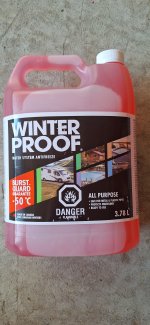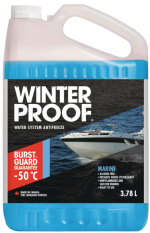I'm in England, we will definitely have freezing temperatures but we're not likely to see temperatures much below -10degC (14degF) but it's still best to plan for -20C (-4F) and if we're doing that we might as well plan for the coldest temps antifreezes seem to offer protection against which are around -30C (-22F) with a 50/50 mix of water and antifreeze. This will be the first time I've winterised my boat. I mentioned how I was thinking of winterising my Ford / OMC Cobra / VolvoSX setup on a different thread...
For the engine itself - Drain as much water out of the engine as I can by disconnecting the lower pipe to the water pump (or maybe disconnect that pipe from the thermostat housing), remove the thermostat housing, fill the block with antifreeze. Turn the water pump by rigging it to an electric drill to make sure the remaining water and the antifreeze I just put in are thoroughly mixed.
For the exhaust manifolds - disconnect pipes from the thermostat housing and hold them low until nearly all the water has come out, hold them high and fill with antifreeze until coloured water/antifreeze mixture comes out of the exhaust.
For the PAS cooler - disconnect water pipe at either the cooler or the (internal) raw water pump, pour antifreeze into the PAS cooler until coloured water flows out of the water intakes on the drive.
For the internal raw water pump - hold either the intake pipe from PAS cooler or the output pipe to the thermostat housing low to drain as much water as possible, then hold both pipes high and fill with antifreeze.
Leave all the above full with mostly antifreeze and a bit of fresh/river water but hopefully with a very high concentration of antifreeze.
Change the engine oil and transmission fluid.
Leaving wet parts full with antifreeze mix seems a surer way of protecting against freeze damage than trying to drain every last bit of water from the engine and other components (as long as the the antifreeze is properly mixed with any water), plus the antifreeze could have corrosion prevention properties so be better for components than leaving them dry?
Could neat antifreeze (instead of a mix of water and antifreeze) cause any problems with any components in the engine such as the water pump seals etc?
Does all the above seem a good plan?





















